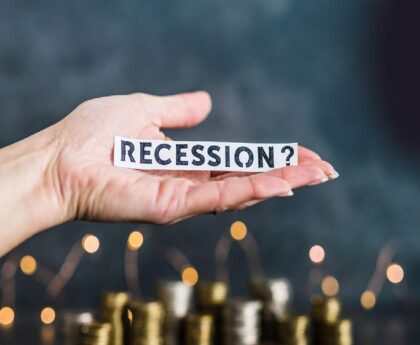When planning your financial future, it’s natural to look for investment options that offer steady returns, financial security, and insurance protection. A money back policy promises all three, but is it the right choice when you’re thinking about long-term investment plans?
In this blog, we’ll explore how money back policies work, their benefits and limitations, and whether they’re truly suited for building long-term savings. If you’re considering this route, here’s everything you need to know before making a decision.
What Is a Money Back Policy?
A money back policy is a type of life insurance plan that combines savings and protection. It provides:
- Periodic payouts (survival benefits) during the policy term
- A maturity benefit at the end of the term
- A death benefit in case the policyholder passes away during the tenure
Unlike term insurance, which only offers a payout on death, or endowment plans that pay a lump sum at the end, money back policies provide liquidity throughout the policy period, making them a hybrid between insurance and investment.
How Does a Money Back Policy Work?
Let’s say you buy a ₹10 lakh money back policy for 20 years. You might receive:
- 20% of the sum assured (₹2 lakh) at the end of year 5, 10, and 15
- The remaining 40% (₹4 lakh) at maturity, along with bonuses
- If death occurs at any point, the entire ₹10 lakh is paid to the nominee, regardless of payouts already made
This structure appeals to those who want regular income during the policy term, plus protection and maturity benefits.
Benefits of a Money Back Policy for Long-Term Savings
1. Guaranteed Returns with Low Risk
Money back policies are non-market-linked, which means your returns are not impacted by stock market fluctuations. This makes them suitable for conservative savers who prefer predictable outcomes over potentially higher but volatile returns.
2. Periodic Liquidity During the Policy Term
The survival benefits offered every few years can help you:
- Pay school or college fees
- Cover EMI obligations
- Manage household expenses
- Celebrate life milestones
This feature makes the policy especially helpful for families that want planned payouts during key phases of life.
3. Insurance Protection with Financial Payouts
In addition to savings, the policy provides a life cover, which means your family remains financially protected even if something unexpected happens. It’s a two-in-one solution that offers security with savings.
4. Tax Benefits
- Premiums paid are eligible for deductions under Section 80C
- Payouts received (survival, maturity, and death benefits) are tax-free under Section 10(10D), subject to terms
Limitations of Money Back Policies as Long-Term Investments
In some cases, money back policies may not be as effective as other long term investment plans due to:
1. Lower Returns Compared to Market-Linked Plans
Money back policies generally offer returns between 4% and 6%, which may not be sufficient to beat inflation over the long term. In comparison, equity mutual funds or ULIPs may offer higher returns over a similar time frame.
2. Higher Premiums
Because they offer both insurance and periodic payouts, money back policies come with higher premiums compared to term insurance. If your main goal is pure protection, a term plan is a more cost-effective option.
3. Less Compounding Benefit
Since portions of the sum assured are paid out during the term, the policy’s compounding potential is reduced. You don’t get the advantage of long-term accumulation the way you would in instruments like PPF, mutual funds, or NPS.
Money Back Policy vs Other Long-Term Investment Plans
| Feature | Money Back Policy | PPF | Mutual Funds (Equity) | ULIPs |
| Returns | 4%–6% | ~7.1% (fixed) | 10%–15% (market-linked) | 6%–12% (market-linked) |
| Risk | Low | None | Moderate to High | Moderate |
| Liquidity | Moderate (fixed payouts) | Low (15-year lock-in) | High | Medium (5-year lock-in) |
| Life Cover | Yes | No | No | Yes |
| Tax Benefits | 80C + 10(10D) | 80C + tax-free returns | 80C (for ELSS only) | 80C + 10(10D) |
| Best For | Risk-averse + short goals | Conservative savers | Growth-oriented investors | Long-term goal planners |
Who Should Consider a Money Back Policy?
This plan is suitable for you if:
- You are risk-averse and prefer guaranteed returns
- You want a product that combines life insurance with savings
- You need regular payouts for planned expenses over the years
- You are looking for a structured, low-risk investment for 15–25 years
- You prefer simplicity and predictability over high returns
When Is It Not the Right Fit?
Avoid relying solely on a money back policy if:
- Your goal is long-term wealth creation
- You are comfortable with market-linked instruments
- You want to beat inflation and grow your retirement corpus
- You already have adequate life insurance and need purely investment-led plans
Final Thoughts
So, should you buy a money back policy for long-term savings?
Yes, if your priority is financial discipline, capital protection, and periodic liquidity, a money back policy offers a structured solution. It’s especially useful for individuals who prefer certainty over risk and want a built-in safety net for their family.
However, if your focus is on high-growth long-term investment plans, a money back policy should be just one part of a larger, diversified strategy, not the only one.
As always, the best plan is the one that matches your goals, risk appetite, and life stage.





